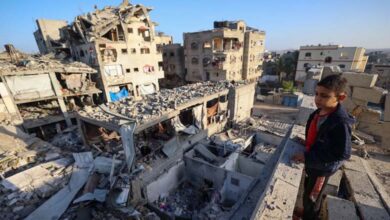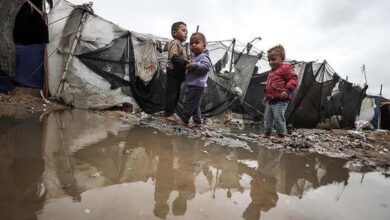UNICEF warns of Social and Economic System collapse in Yemen… Details

Despite the military de-escalation leading to a significant reduction in civilian casualties, the United Nations International Children’s Emergency Fund (UNICEF) has warned that the social and economic systems in Yemen are still on the brink of collapse. Yemenis are hopeful for an end to the conflict following the United Nations’ announcement of a peace roadmap.
In a recent report, UNICEF stated that the country has entered its ninth year of conflict, with more than 21.6 million people, including 11.1 million children, in need of humanitarian assistance and protection. Additionally, 4.5 million people have been internally displaced. UNICEF affirmed that the high levels of humanitarian response so far have been highly effective in protecting millions of children in Yemen.
The international organization expressed concern that the lack of a comprehensive political solution to the conflict would increase the ongoing needs of children and their families. UNICEF‘s humanitarian strategy focuses on providing direct life-saving assistance while simultaneously programming the relationship between humanitarian work and development to create a cohesive approach to address critical needs.
While announcing the need for $142 million to respond to the humanitarian crisis and meet the needs of children and families in 2024, UNICEF cautioned that a lack of predictable funding for urgent interventions would undermine the continuity of essential services, endangering the lives and well-being of children in Yemen.
Despite ceasefire-like conditions, as described by the international organization, intermittent fighting continues in many areas. The ongoing fragility of the Yemeni economy in 2023, manifested in currency devaluation, overall economic instability, declining purchasing power, and the actual division of economic institutions, has further weakened households and impoverished communities.
At the same time, the organization pointed out that the effects of climate change are not unfamiliar to the Yemeni people. Floods and droughts have posed additional threats, exacerbating malnutrition among the population. Approximately 17.3 million people suffer from high levels of acute food insecurity, and as of last July, more than 227,228 malnourished children were admitted to therapeutic feeding centers. Only 50% of health facilities were operational, leaving 20.3 million people without adequate healthcare.
UNICEF confirmed that Yemen remains susceptible to disease outbreaks. From the beginning of the current year until last September, there were reported suspected cases of measles and German measles (42,452), with 514 associated deaths, and 1,772 laboratory-confirmed cases. In Houthi-controlled provinces, the ban on vaccinations provided outside health facilities persists, and the emergence of misinformation, including anti-vaccination messages, has increased hesitancy among the population.
According to UNICEF‘s data, 15.3 million people lack access to safe water, sanitation services, and proper hygiene, including 7.8 million children, making the country highly vulnerable to the spread of cholera and acute watery diarrhea. Suspected cases of acute watery diarrhea (cholera) reported during the first nine months of this year were 5,674, including 7 deaths.
The widespread humanitarian crisis in Yemen has increased the vulnerability of children and women to exploitation, violence, and mistreatment. Negative coping mechanisms are on the rise, including an increase in gender-based violence, sexual exploitation, child marriage, child labor, recruitment for fighting, and disruption of education.












